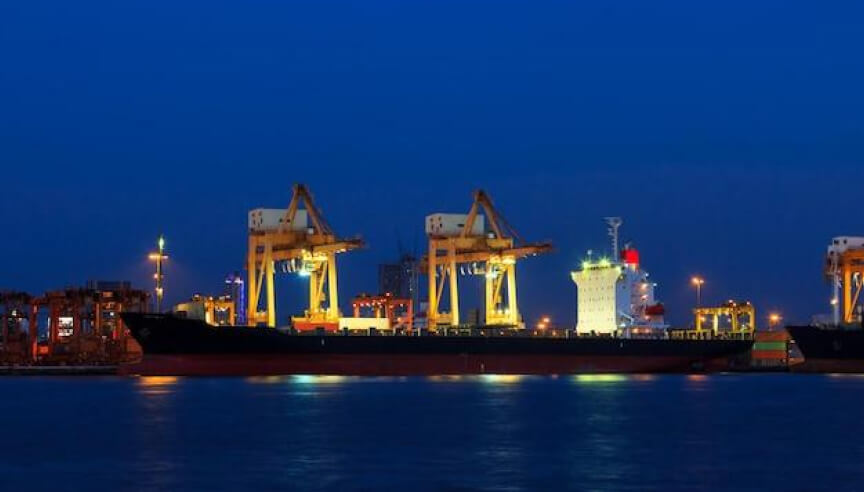Recent Posts
Exploring the Top 7 Largest Seaports in the Middle East

Navigating the Maritime Giants: Exploring the Top 7 Largest Seaports in the Middle East
Nestled along the shores of the Arabian Peninsula and the eastern Mediterranean, the Middle East boasts a rich maritime heritage and strategic importance in global trade. As vital gateways connecting East and West, the region’s seaports play a pivotal role in facilitating the movement of goods and commodities across continents. Here, we embark on a journey to discover the top seven largest seaports in the Middle East, each a bustling hub of commerce, innovation, and economic vitality.
Jebel Ali Port, Dubai, UAE
Towering as the largest man-made harbor in the world, Jebel Ali Port reigns supreme as the crown jewel of maritime infrastructure in the Middle East. Located in Dubai, United Arab Emirates (UAE), this colossal port spans over 134 square kilometers and features state-of-the-art facilities for container handling, bulk cargo, and industrial logistics. Jebel Ali Port serves as a vital transshipment hub, linking trade routes between Asia, Europe, and Africa, and contributing significantly to Dubai’s status as a global trade and logistics hub.Port of Salalah, Oman
Nestled along the coast of the Arabian Sea in southern Oman, the Port of Salalah stands as a beacon of maritime excellence and strategic significance. Boasting deep-water berths and modern container terminals, this port serves as a pivotal gateway for trade between the Indian Ocean region, the Gulf, and beyond. With its strategic location and efficient operations, the Port of Salalah plays a crucial role in facilitating global supply chains and supporting Oman’s economic diversification efforts.Port of Jeddah, Saudi Arabia
Situated on the Red Sea coast of Saudi Arabia, the Port of Jeddah emerges as a vital maritime gateway connecting the Kingdom to international trade routes. Renowned for its strategic location and comprehensive facilities, this port serves as a primary hub for containerized cargo, bulk commodities, and petroleum products. With ongoing expansion projects and investments in infrastructure, the Port of Jeddah continues to bolster Saudi Arabia’s position as a key player in regional and global trade.Port of Hamad, Qatar
An emblem of Qatar’s ambitious vision for economic diversification and global connectivity, the Port of Hamad stands as a testament to maritime innovation and excellence. Strategically located in the heart of the Arabian Gulf, this modern port complex boasts world-class facilities for container handling, general cargo, and offshore services. With its advanced infrastructure and efficient operations, the Port of Hamad plays a crucial role in facilitating trade flows and supporting Qatar’s aspirations for sustainable growth and development.Khalifa Port, Abu Dhabi, UAE
As a cornerstone of Abu Dhabi’s maritime strategy, Khalifa Port embodies the emirate’s commitment to economic diversification and global trade. Situated in the industrial hub of Taweelah, this cutting-edge port facility features deep-water berths, automated container terminals, and state-of-the-art logistics zones. Khalifa Port serves as a key gateway for imports, exports, and transshipment activities, strengthening Abu Dhabi’s position as a leading maritime center in the Middle East.Port of Beirut, Lebanon
Nestled along the eastern Mediterranean coast, the Port of Beirut holds a storied legacy as Lebanon’s principal maritime gateway. Despite facing challenges in recent years, including the devastating explosion in 2020, this historic port remains a vital lifeline for the country’s economy and trade. With ongoing reconstruction efforts and investments in infrastructure, the Port of Beirut continues to play a pivotal role in facilitating commerce and fostering connectivity with regional and international markets.Port of Aqaba, Jordan
Serving as Jordan’s primary maritime gateway to the world, the Port of Aqaba occupies a strategic location along the northern tip of the Red Sea. Boasting modern container terminals, bulk cargo facilities, and a vibrant free trade zone, this bustling port complex facilitates trade flows between Jordan, neighboring countries, and global markets. With its strategic significance as a conduit for trade and economic development, the Port of Aqaba plays a crucial role in enhancing Jordan’s connectivity and competitiveness in the global economy.
Conclusion
As the crossroads of continents and civilizations, the Middle East’s largest seaports embody the region’s enduring legacy of maritime trade and commerce. From the bustling harbors of Dubai and Jeddah to the historic port cities of Beirut and Aqaba, each seaport serves as a vital artery for global supply chains, economic prosperity, and cultural exchange. As these maritime giants continue to evolve and expand, they reaffirm the Middle East’s central role in shaping the future of global trade and maritime transportation.
